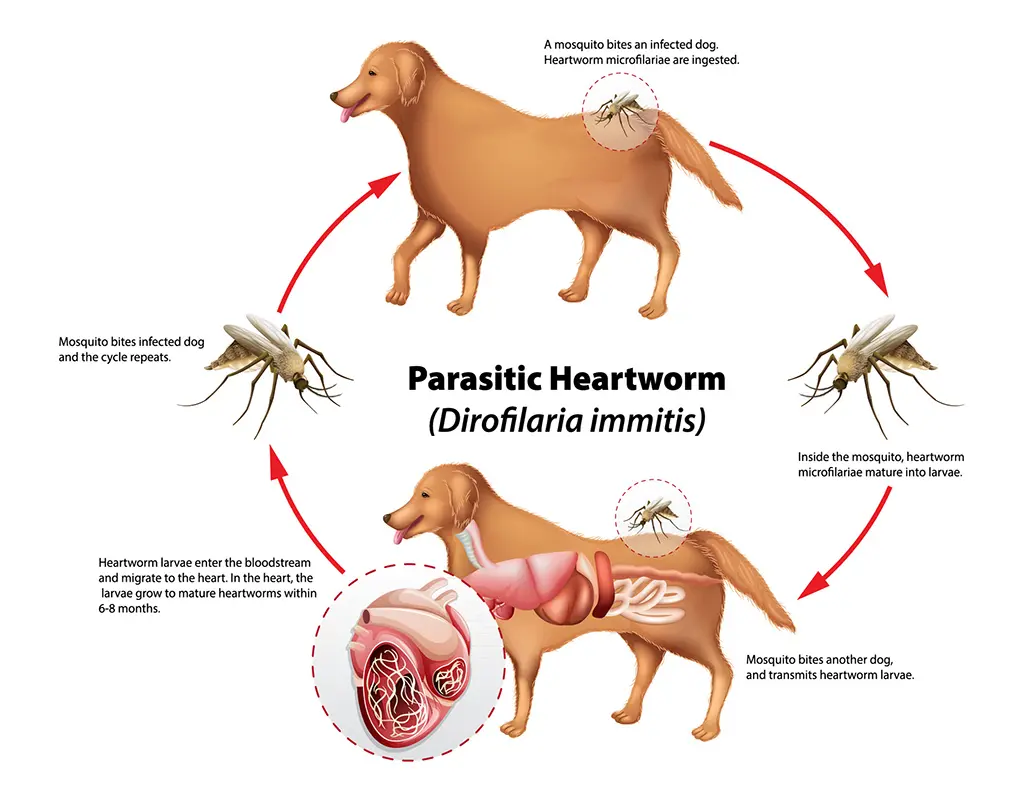For humans, bloating is uncomfortable and inconvenient. For dogs, bloat is a life-threatening emergency.
When a dog’s stomach fills with food, liquid, or gas, it rotates as it expands. For reasons that still aren’t fully understood, the stomach can sometimes rotate too far until it twists in on itself. This twisting traps food and gas from moving through the intestinal tract, crushes blood vessels, and cuts off circulation to the lower part of the stomach.
This condition, known as gastric dilation volvulus, GDV, or simply “bloat,” requires a surgical intervention within hours to save pets’ lives.
How Serious is GDV?
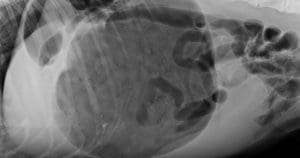
Gastric dilatation-volvulus from vettimes.co
Bloat is extremely painful and, without surgery, almost certainly fatal. While acting quickly at the first signs of discomfort increases your dog’s odds of survival, unfortunately, 10-23% of pets with GDV don’t live through treatment.
GDV is such a serious threat, veterinarians developed a preventative surgical procedure that can significantly lower dogs’ risk of developing gastric torsion.
What is Gastropexy?
Gastropexy is a veterinary surgery that is designed to prevent GDV from occurring or recurring. It is also sometimes referred to as a “stomach tack” or “stomach tacking”.
To perform a gastropexy, veterinary surgeons make two small incisions in a dog’s abdomen and suture an area of the stomach to the inside of the body wall. Anchoring the stomach helps prevent it from over-rotating when it dilates, greatly reducing the likelihood of GDV.
Gastropexies are sometimes completed during surgery for GDV to prevent a second bloating incident, but they can also be done electively during spaying, neutering, or another unrelated procedure.
What Are the Benefits?
For dogs that have already experienced GDV, gastropexy reduces their risk of recurrence from 55-80% to less than 5%.
As minimally invasive surgical techniques have been developed, prophylactic gastropexies are considered very safe and relatively simple procedures.
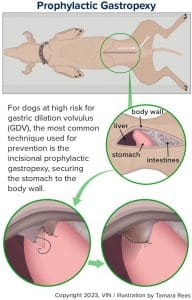
Prophylactic Gastropexy Diagram from VeterinaryPartner
Which Dogs Need Prophylactic Gastropexy?
While any dog can potentially experience bloating, body composition seems to play an important role in determining risk. Large dogs with deep, narrow chests have a greater-than-average likelihood of developing GDV.
Great Danes top the list with a 40% lifetime risk of bloat, joined by:
- Saint Bernards
- Akitas
- German Shepherds
- Dobermans
- Mastiffs
- Newfoundlands
- Weimaraners
- Irish Setters
- Standard Poodles
- Labrador Retrievers
Unfortunately, one of the biggest predictors of GDV is a past incident of bloating. Your vet can help you better understand your pet’s risk factors to determine if they are a good candidate for prophylactic gastropexy.
Preventative Gastropexy in Raleigh
Not all vets offer gastropexy in a preventive way, so it’s important to do your research. Falls Village Veterinary Hospital routinely performs prophylactic gastropexies during spay and neuter surgeries upon request. Pet parents in the Raleigh, NC area can reach out to learn more about preventative options.
Gastropexy Aftercare
Caring for a dog who has just undergone a gastropexy procedure is relatively straightforward, especially if it was done selectively.
Much like aftercare for a spay/neuter procedure, it’s important to limit strenuous activity for a week or two, and ensure the incision stays clean and dry. Your vet may prescribe pain medication or recommend laser therapy to speed healing.
If you are concerned about GDV, talk to your vet. Together you can explore the risks and benefits to decide if prophylactic gastropexy may be right for your dog.


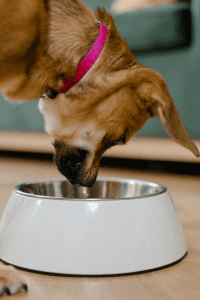
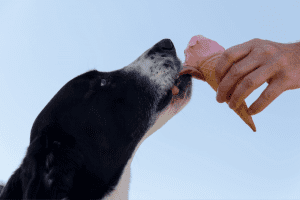 How Are Food Allergies & Sensitivities Diagnosed in Pets?
How Are Food Allergies & Sensitivities Diagnosed in Pets?
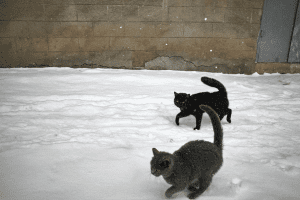 5. Check Your Vehicle Before Starting It
5. Check Your Vehicle Before Starting It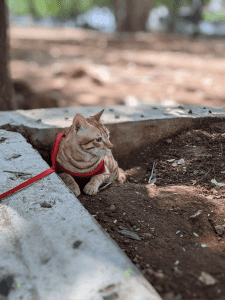
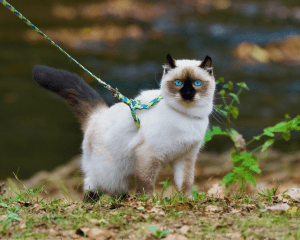 How to Keep Your Cat Happy Indoors
How to Keep Your Cat Happy Indoors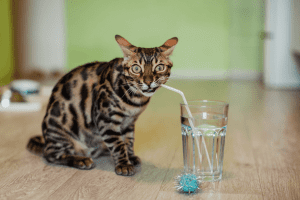
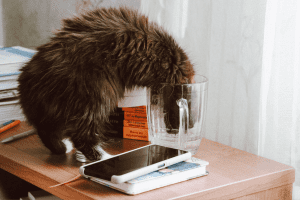 Dehydration and Health Problems
Dehydration and Health Problems Plants and Greenery
Plants and Greenery


